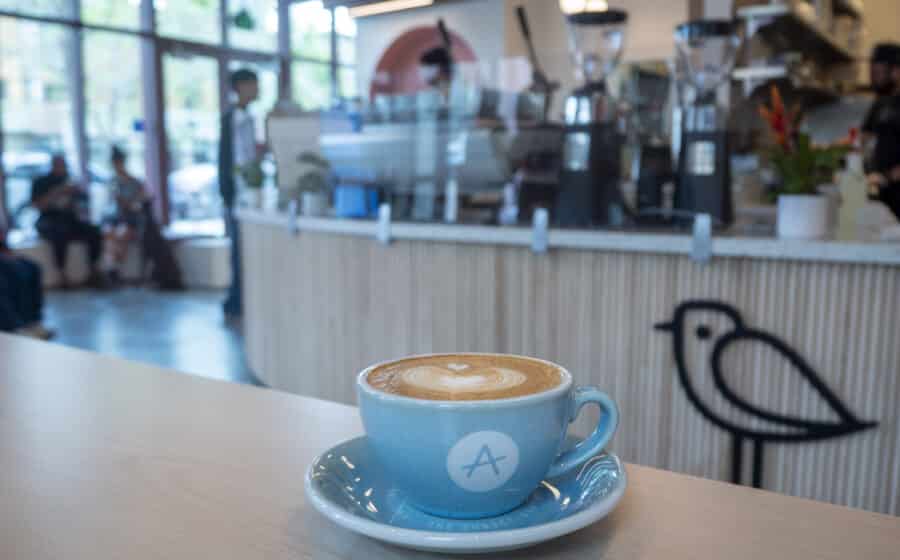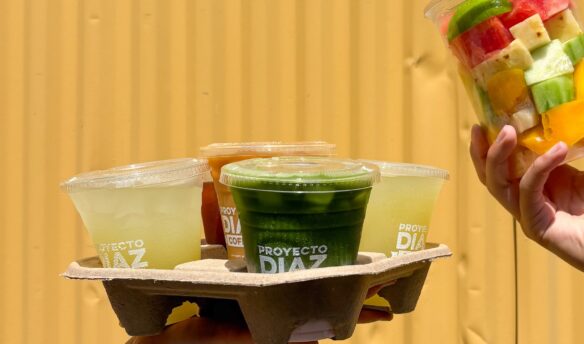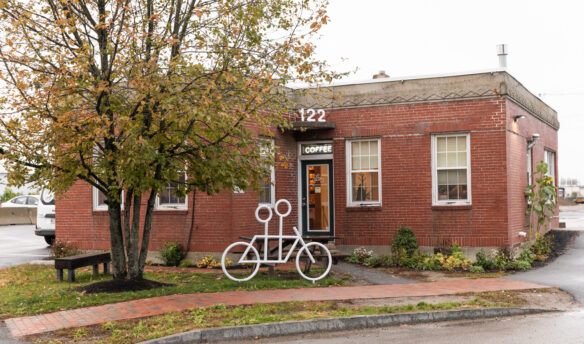After becoming pregnant with her first child in 2015, Lauren Crabbe realized she had to take a step back. “I just couldn’t be on my feet all day,” she says.
Crabbe was just a year into opening Andytown Coffee Roasters when she was forced to confront the reality of being unable to manage barista shifts due to her pregnancy.
Spurred by restlessness and a desire to continue working, Crabbe carved out a new role for herself: overseeing sales and operations. Before her pregnancy, she had worked behind the counter due to budget constraints. “It changed everything suddenly,” she says. “It forced me to focus on the business. I found myself sitting at home looking at the business from a broader view because I had the time to dive deep into my numbers.”
Crabbe began tackling Andytown’s profit and loss statements. “Until that point, I had only thought about those four walls,” she says. “When you’re an owner-operator, it’s hard to find the time to sit down and look at numbers on a holistic level. A lot of cafe owners are working on the bar—they’re not thinking about KPIs.”
Key performance indicators (KPIs) are the performance metrics for your cafe. It serves as your cafe’s scorecard and includes metrics like daily coffee sales, overall revenue, and customer satisfaction. Tracking KPIs can shed light on how well your shop is doing and help you identify areas for improvement.
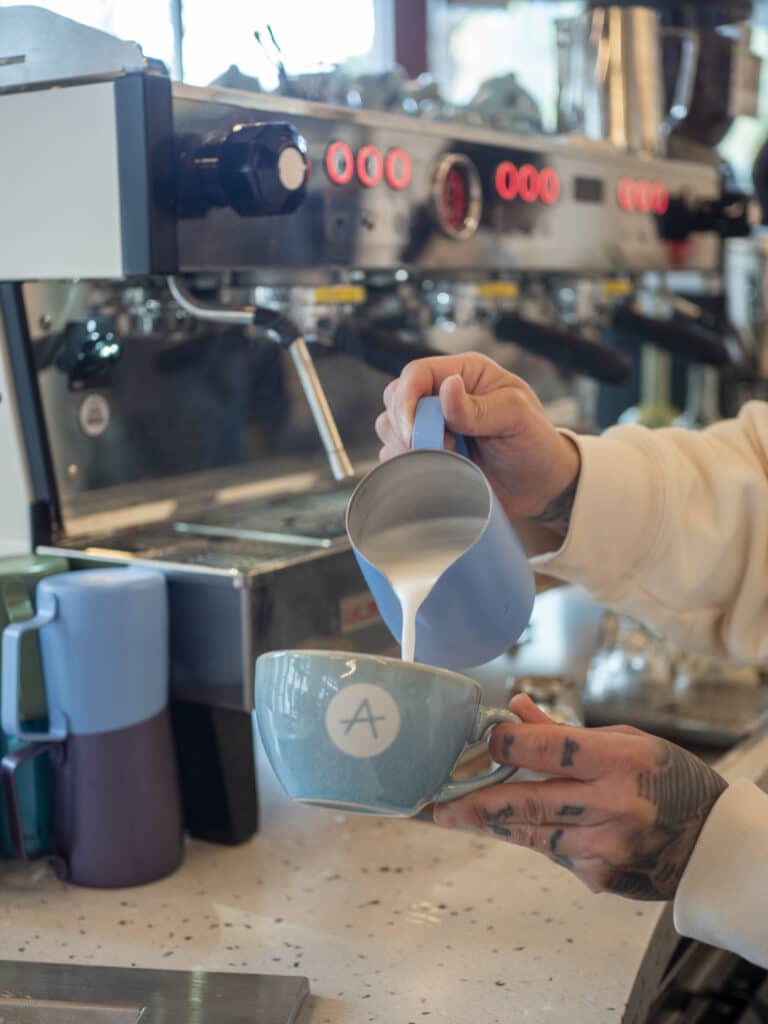
Many coffee shop owners start like Crabbe, working behind the bar rather than behind spreadsheets. Many small, independent shop owners come from a barista background without formal business training—often learning about things like acquisition costs and gross profit margins as they go. However, identifying which KPIs you need to track can be the difference between your business just getting by versus growing and thriving.
Navigating the High Costs of Growth
In 2014, a group of coffee enthusiasts started Grit Coffee in Charlottesville, Virginia. The coffee chain and roastery has grown to eight locations, but its founders weren’t industry experts to start. “It was very much learning on the job, figuring out what works, and learning from mistakes,” says Dan FitzHenry, one of the co-owners who now works as general operations manager.
FitzHenry came on board two years later, just as Grit Coffee was hitting its stride with three established locations and a fourth in the works. Back then, their strategies were shaped more by what they saw happening in the day-to-day rather than being heavily guided by numbers or data. A case in point was a policy allowing employees to enjoy complimentary coffee during shifts without ringing them up in the system.
“We realized we had no idea how much we were spending toward employee food and drinks,” FitzHenry says. “So we changed our policy to allow for free shift drinks and 50% off food and asked that people rang that in.” Changes like these helped Grit Coffee establish important metrics like costs of goods sold (COGS), which measures how much it costs to produce everything being sold or consumed, including material and labor costs.
We have totally different customer traffic when school is in session vs. when school is out of session. It took us a few years to figure out what was happening there. Lauren crabbe, andytown coffee roasters
FitzHenry highlights two essential KPIs shop owners can tap into to improve their business: COGS and labor as a percentage of sales. Along with giving you the overall cost to produce the items you sell in your space, COGS can help you determine the right menu prices to hit your sales goals.
COGS = Starting inventory + purchases – ending inventory
Labor cost percentage is the percentage of revenue that goes toward labor costs—usually, coffee shops spend around 30% of their revenue on labor. By tracking the portion of sales that covers labor costs, you can make smarter decisions when scheduling shifts and avoid the pitfalls of having too many staff members on hand and overspending.
Labor cost percentage = (Labor costs / Total revenue) x 100
FitzHenry acknowledges that COGS is the trickiest KPI to gauge accurately. “We rely on an amazing team of accountants and spreadsheets that we built, but it’s taken many years to get to that point,” he says. “It’s the hardest metric for any coffee shop to get visibility on.”
Christy Wimberly, owner of Honest Coffee Roasters in Huntsville, Alabama, agrees that COGS and labor cost percentage are the most helpful KPIs. While keeping tabs on food costs can be tricky with multiple suppliers, Wimberly found a solution to dial things in over the past two years: setting up a centralized system linked to their point-of-sale system (POS). “We use MarketMan and Square—they work well together,” she says, inventory tracking and financial services platforms, respectively. “My managers love it because they can manage their inventory in real-time on their phones. It makes it easier than my old spreadsheet method because the system is more responsive.”
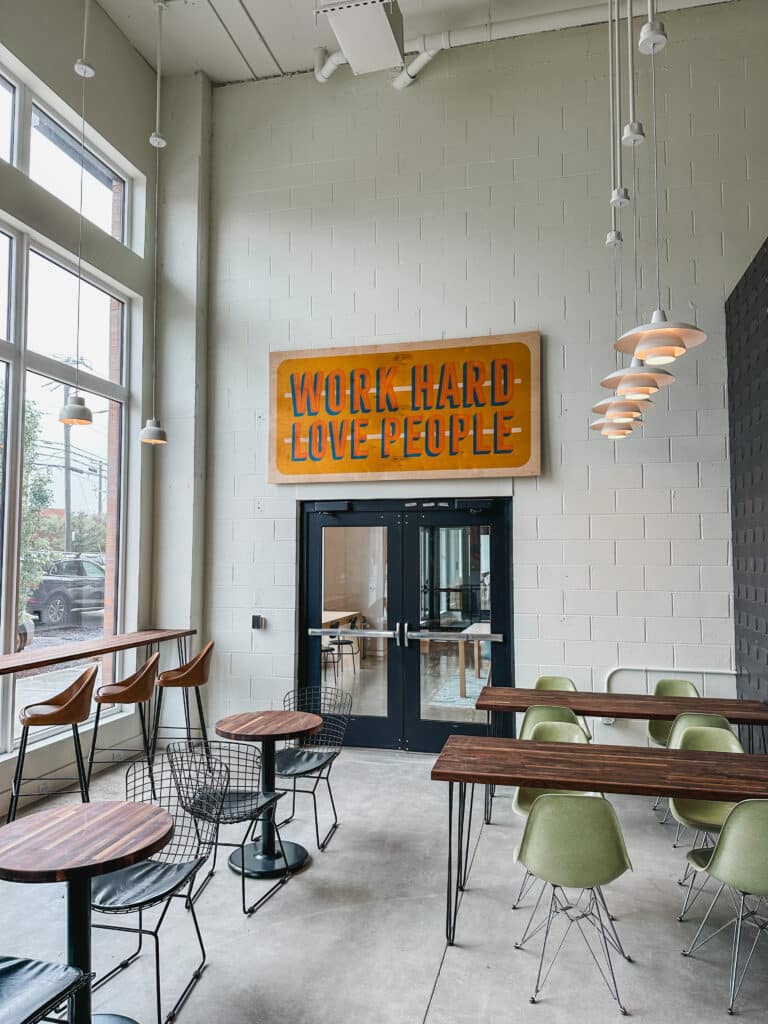
With accurate food cost data, Wimberly was able to adapt menu prices in response to inflation. “We plug in what our true buying price is as it changes,” Wimberly says. “Being able to keep our prices relevant has been the most helpful through these changing times.”
Turning KPIs into Strategy
Honest has four locations in Tennessee with well-established operational procedures. But when the brand expanded into Alabama, Wimberly was granted creative freedom to infuse her restaurant background into the strategic planning of Honest’s new locations in Huntsville and Madison.
Right now, Wimberly is trying to use metrics to inform how she organizes Honest’s menu and is placing the highest-margin items first. The idea is to see if menu layout influences what people order: will people scan the entire menu looking for what they want, or will they pick one of the first items they see? “If that’s the case, we’ve just improved our profitability because we have our higher-margin items listed first,” she says.
Seasonal drinks have been one of the biggest drivers of sales growth across her locations, something Wimberly discovered by tracking sales-by-product, a metric that compiles revenue generated by each product over a specific period, revealing top sellers, underperforming items, and trends. “Every quarter, we release three to four new seasonal drinks,” she says. “We’re not guessing at prices. We know every item we’re selling is priced where we need it to be.”
At Grit Coffee, they check metrics like labor as a percentage of sales daily. “Labor informs scheduling, so you want to be able to react to that pretty quickly,” FitzHenry says. “We tend to do it weekly, monthly, and annually because we’re going to smooth that labor rate across the cycles of the year.”
We’re not guessing at prices. We know every item we’re selling is priced where we need it to be. Christy Wimberly, honest coffee roasters
Another KPI that FitzHenry relies on for scheduling is year-over-year sales (YOY), or how much the business made this year compared to last. Calculating the difference in revenue is as easy as subtracting the current year’s value from last year’s. A positive result signifies growth, while a negative one indicates a decline.
Given Grit Coffee’s base in Charlottesville, a college town, the academic calendar is closely tied to their foot traffic. “We’ll look at YOY sales and the transition periods where students are going out of town or back into town,” FitzHenry says. “The week-over-week is not as relevant because it’s either downshifting or upshifting.”
Similarly, Andytown aligns its scheduling with the academic calendar. Crabbe says that while they experience a consistent volume of traffic year-round, monitoring YOY sales is essential for planning—the school schedule affects their peak hours. “We have totally different customer traffic when school is in session vs. when school is out of session,” she says. “It took us a few years to figure out what was happening there.” Crabbe also credits a small business class she took in 2020, calling it a game changer for operations.
Human-First Leadership
For business owners like Crabbe and FitzHenry, success isn’t all about numbers. Crabbe stresses the importance of customer service and delivering quality products as the top priority, with business management coming second. “As a business owner, KPIs are important, and you need to understand them,” she says. “But at the end of the day, it doesn’t matter how great your KPIs are—if you’re not hitting the mark on customer service, drink quality, and atmosphere, your customers aren’t coming back.”
FitzHenry believes in a human-first approach to business. “If you get too wrapped up in KPIs and you’re not paying attention to the human part of the business, it can make or break a business,” he says. “You could have the best-performing and most efficient business. But if you’re not giving care and attention to your employees, responding to their needs, or providing them a great environment to work within, then it all falls apart.”


